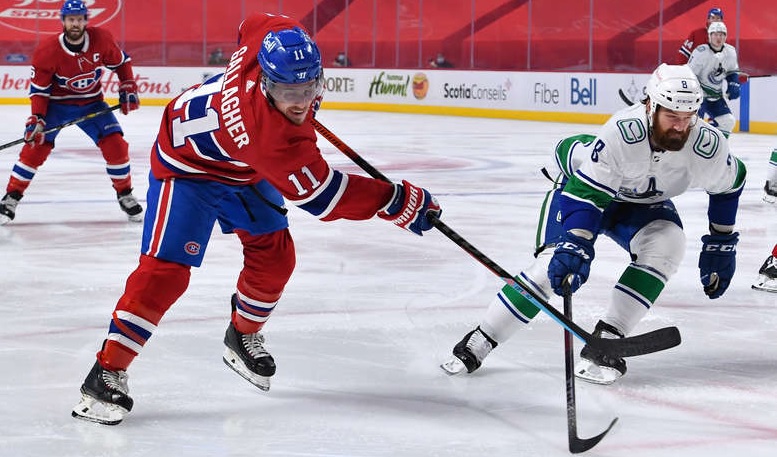The captain is many things to a team inside the dressing room. If someone is down and out mentally or struggling on the ice, the captain is the one to help pick them up. If someone is out of line and not pulling their weight, the captain is the one to set them straight. If the team needs a few sharp words as a group, the captain is the one to deliver. If someone needs to step up on the ice to make a big play or take a punch, the captain is the one to be counted on. It’s a big task, balancing out the personalities and keeping a diverse group of individuals all paddling in the same direction. If it doesn’t come naturally to you, or if that’s not your personality, it can be an insurmountable task.
Off the ice, for an NHL team, the pressure of being captain magnifies. The captain is the one to answer the tough questions and faces the critics on team performance when it’s the last thing you want to do. It’s the captain that bears the brunt of questions about team leadership and culture. In a crazy hockey market in Canada, and especially Montreal, double that pressure.
For many years, the Habs had strong captains. From Bob Gainey in the 1980’s, Guy Carbonneau and Vincent Damphousse in the 1990’s, Saku Koivu in the 2000’s, to Brian Gionta in the early 2010’s, and most recently Shea Weber since 2018. Rarely did we hear complaints about leadership or issues with cohesion on the team.
But the last time the Habs transitioned to new team leadership, it did not go smoothly. In the summer of 2014, Marc Bergevin decided to remove two key leaders of the team (Brian Gionta – unsigned free agent, Josh Gorges – traded) and handed over the leadership reins to the young veterans on the team. The lack of leadership didn’t bite them as they rode a superhuman Carey Price to finish second overall in 2014-15.
But it is easy to lead when the road is smooth. When adversity struck in the 2015 playoffs and in the 2015-16 regular season, the team floundered. In the 2015-16 season, the team got off to one of the best starts in history with a record of 19-4-3 on December 1st and were one of the best teams in the NHL. It was a virtual guarantee to make the playoffs, but the Habs turned in a disastrous 19-34-3 record the rest of the year to finish 22nd overall. In the following years, the team see-sawed between over-performing and underperforming, finishing seventh overall in 2016-17 and 28th overall in 2017-18. During those years, fans heard numerous comments from Marc Bergevin about leadership and team culture. Leadership was no doubt a key factor in trading for Shea Weber.
And Bergevin was right. Alternating between being one of the best teams in the league to one of the worst is a blaring siren about leadership and team cohesion. It was tough to watch captain Max Pacioretty face the cameras every time looking defeated and deflated, and over time, become a shadow of his former self. His on-ice play deteriorated as well and it took a couple of years out of the spotlight to re-assert himself into the player he used to be.
Bergevin has hopefully learned from his leadership decision mistakes of 2014 and won’t force it on the wrong person. Replacing a leader like Shea Weber is no small task. Rather than place that huge responsibility on one player, he has chosen to spread it amongst a group of leaders. (Note that I would have preferred to keep someone like Corey Perry to help bridge the gap, but that’s another story.)
Eventually, a new captain will be named. It will likely be Nick Suzuki, or perhaps Brendan Gallagher, or even a new addition. But the responsibility and pressure to be a captain of an NHL team should not be underestimated, especially in Montreal. Forcing the designation on to the wrong individual can be disastrous as Habs fans witnessed between 2014 and 2018. It needs to be the right fit and the individual needs to have the natural personality to handle all the pressures and responsibilities while holding the respect of the players.
If there’s no obvious choice inside the room, then don’t force it.
